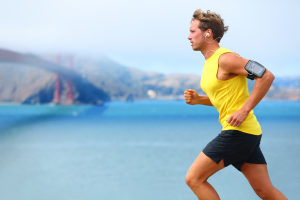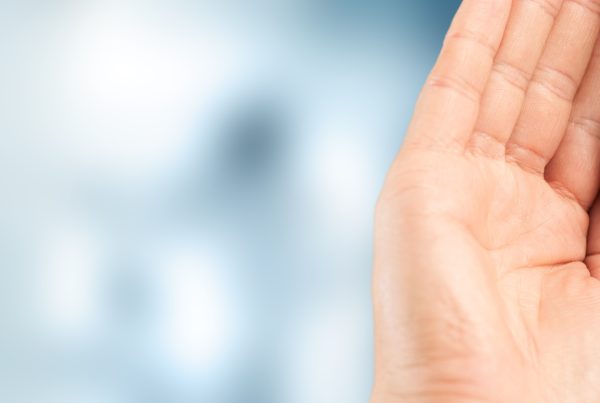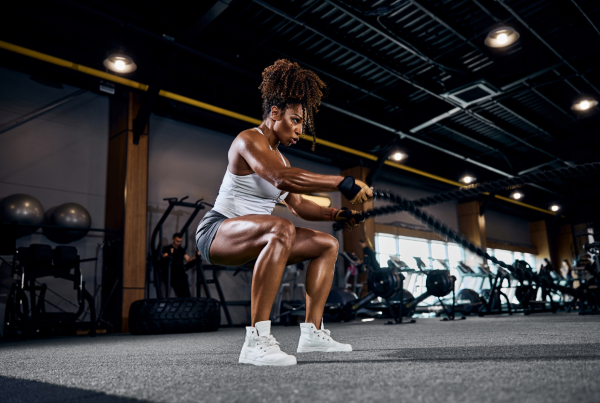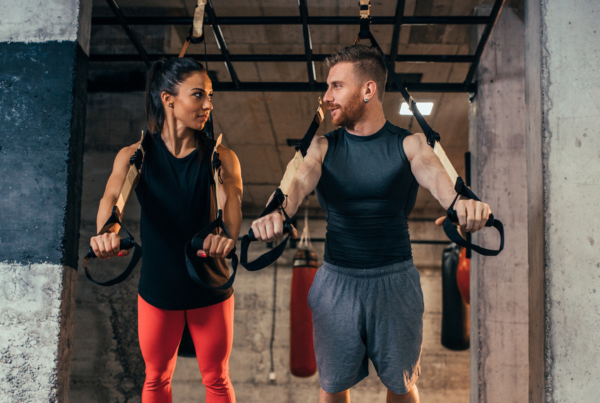Recent interest in sleep means ‘a good night’s sleep’ is now, more than ever, on people’s radar. Dr Sarah Gilchrist explores the relationship between sleep and exercise.
Sleep is a universal occurrence. All healthy humans will experience a bout of night-time sleep every day. Indeed, sleep is fundamental to life. We all sleep, in the same way that we all breathe. Without doing so would be fatal.
Given the global societal problem of poor sleep, with rising incidences of sleep disorders and a general trend for not getting enough sleep, never before has there been a need for proactive consideration of one’s own sleep practices.
Typically, a healthy adult is advised to sleep for between seven and nine hours a night1. However, sleep is highly individualised – some people may need less, some more. Fundamentally, if a person is achieving a regular sleep routine, has sufficient opportunity to sleep, wakes in the morning and generally feels alert, refreshed and fully productive during the working day, the chances are they are getting enough good-quality sleep. If they are suffering from excessive daytime sleepiness, then it may be they need to address their sleep health.
There are lots of practical tips for improving sleep health. Predominantly, having a regular sleep routine is the first line of defence, alongside a good sleep environment (cool, dimly lit and comfortable) and being in a relaxed state to help the onset of sleep. Being able to protect, personalise and prioritise one’s sleep window as much as possible and trusting that sleep will come are useful principles of good sleep to follow2. However, be pragmatic: sometimes life gets in the way and sleep can be restricted, or potentially there could be a sleep disorder requiring treatment.
Physical activity and sleep
One of the biggest non-pharmacological interventions for aiding sleep is physical activity (PA). This encompasses all aspects of movement that can help sleep, whether it be a gentle walk around the block, completing a Couch to 5k programme or doing a Pilates class.
Given that physical activity can be complex, causing a stress on the body, it can be hard to relate to how it can aid sleep3 and yet, it is widely regarded as a useful facilitator of sleep. It increases heart rate, elevates core temperature and breathing rate, and certain hormones are released in response to the ‘activity stress’, for example, adrenaline and cortisol. Physical activity can also cause dehydration, leading to restless sleep as one can feel hot, thirsty and uncomfortable during the night. It can also induce muscle soreness, which can be painful, last for a few days and also upset sleep.
When it comes to sleep and physical activity, the relationship is reciprocal, complex and intricate, involving multiple physiological and psychological pathways4,5,6,7. This can make learnings around sleep and physical activity difficult to describe, but the fundamental point is that any form of physical activity will aid sleep. Conversely, if a person sleeps poorly, they are less motivated to engage in physical activity and suboptimal sleep may therefore contribute to low physical activity levels. There are obvious ramifications for one’s long-term health from this8.
Typically, people who perform regular forms of physical activity experience better-quality sleep, fall asleep faster and have more deep sleep3,9,10. Additionally, physical activity can often be performed outdoors, helping with the body’s exposure to natural light, which is fundamental to the circadian (internal) rhythm’s interaction with the light-dark cycle, which is important for regulating human sleep11.
“30 minutes of moderate exercise, three times a week, is the suggested amount to see a positive change in sleep.”
The link between physical activity and sleep can be influenced by several factors, such as individual characteristics (e.g., age, gender, fitness level, type of sleeper and body mass index) and exercise regime and protocol. The latter includes the type (aerobic or anaerobic; cardiovascular or resistance), frequency (acute or chronic), intensity, duration, environment and timing of the activity3,4,5. Each of these factors may have an influence on sleep, although the effects are subtle, and it is much better, for sleep and overall health, for a person to be regularly performing some form of physical activity, rather than nothing at all.
For frequency and intensity of activity relating to sleep, 30 minutes of moderate exercise, three times a week, is the suggested amount to see a positive change in sleep13. Subtle differences exist between resistance versus endurance activities but, overall, regular, moderate-intensity aerobic exercise enhances sleep quality more effectively than vigorous exercise (except possibly in younger people)9.
The positive effect on sleep is not dose dependent either (i.e., you don’t have to exercise more over time to reap the same sleep benefits). Consistency of activity is also key and the favourable association between sleep and physical activity is lost if a person is initially active but subsequently becomes inactive7.
Relatively sedate forms of physical activity can also help with relaxation before sleep if enjoyable for the individual. Mind-body exercise, such as yoga or tai chi, have been shown to have a beneficial effect on sleep and mood, adding to the management of mental health issues13.

Physical activity across different times of the day will aid sleep health10. While there are subtle differences in sleep architecture with activity at different times of the day, these differences are minimal and the main theme is that an individual will get plenty of sleep benefits whatever time of day they perform some physical activity. Ideally, a person should be active when they can reasonably fit it into their schedule, without compromising too much on other areas, for example, nutrition. Modern-day living means people are often ‘time poor’ and fitting in some form of physical activity can be a challenge. Commonly, for those with busy family, social and work commitments, physical activity is either squeezed into an early morning or evening session. While this isn’t an issue generally, it can have a knock-on effect on sleep quality and quantity if not managed appropriately.
A note on late-night exercise: historically, advice has been to limit this due to the effect it has on an individual in terms of levels of alertness, hunger and an increased core body temperature post exercise (we need to be cool to get to sleep). However, more recent studies have reported that exercise in the evening makes little difference to sleep, provided it’s managed well, and it may not necessarily disturb sleep in good sleepers14. Generally speaking, if an individual exercises in the evenings, preferably they should aim to have finished more than an hour before bedtime and incorporate optimal recovery, for example, have a warm bath and a recovery snack. Good-quality sleep is the focus in this scenario so, if exercise finishes late in the evening, make bedtime a little later that night so one is ready for sleep onset and sacrifice the quantity of sleep but maintain good-quality sleep.
Age and sleep
As a person ages, it becomes harder to generate deep sleep. Studies investigating elderly populations and physical activity have found the cognitive function of the elderly is sharper after exercise-enhanced deep sleep and that exercise programmes positively affect various aspects of sleep. However, more age-group-specific research is needed to elaborate on detailed exercise suggestions in order to make accurate recommendations for health promotion in relation to sleep12,15. Studies on physical activity and younger populations’ sleep have yielded mixed results, with different methodologies making conclusions hard. For younger people, light or moderate exercise didn’t yield the same sizeable enhancement of deep sleep compared to elderly populations, whereas vigorous exercise did16,17. Also, in adolescents, longer nocturnal sleep periods and better sleep quality were associated with higher levels of physical fitness.
To add, sleep in adolescence is a particular challenge. Teenagers have a higher sleep need than adulthood, but less than childhood. There is also a conflict between the biological delay of sleep times in adolescents and social factors, for example, morning school schedules (a strong synchroniser of wake-up time over a week)16,17. Also, for teenagers, physical activity can sometimes affect the opportunity to get sleep. In other words, the time to complete PA can sometimes hinder social time (if it is not the same activity). This then compromises the sleep window, as teenagers try to cram all aspects of their lives into too short a ‘wake window’, for example, schooling, exercise, study and socialising.
“Suboptimal sleep has an impact on cognitive abilities and sport performance”
In terms of the timing, frequency, duration and intensity of PA, it makes little difference in terms of the benefits to sleep health as to how long for, to what intensity and how many times an individual performs an exercise bout. To aid sleep, any movement is better than being sedentary and at any time of the day10. Fitting physical activity into a day is often hard, with the demands of work, family life and socialising, so find an activity that regularly works for the individual. Remember that the implementation of physical activity needs to consider participants’ age and health status15.
Sleep and sport performance
Suboptimal sleep also has an impact on cognitive abilities and sport performance18, for example, learning new skills and attention. Performance parameters affected tend to be strength, co-ordination, speed and endurance, with greater effects seen on tasks requiring precision. Linked to this, reaction time, decision making and memory may also be affected, all critical to some forms of physical activity. So, if your client is engaging in a new skill in the gym, aiming to increase their training load or are in a transition phase (e.g., moving from the offseason to a training camp)19, perhaps first ensure they are getting enough sleep.
Unsurprisingly, the transfer of chronic suboptimal sleep to the field of play may also increase the risk of exercise-induced injury4,15,19. The amount of sleep that consistently has been found to be associated with increased risk of exercise-induced injury is fewer than seven hours, which, when sustained for periods of at least 14 days, has been associated with 1.7 times’ greater musculoskeletal injury risk19. However, whether improved sleep translates to a reduced incidence of sport-related injury is not clear. Injury risk is multifaceted, with sleep being just one of the parameters that is associated with it. Studies focusing on injury risk and sleep have tended to use subjective measures of sleep, with limited objective measures of sleep and injury risk being available20. Nevertheless, it is possible that interventions targeted at sleep may have a positive impact on its prevention and association with musculoskeletal injury risk in physically active populations21.
Although sleep and exercise exert substantial positive effects on one another, to reach a true consensus, the mechanisms behind these observations need to be verified. Differences in the exercise protocols studied (e.g., aerobic or anaerobic, intensity and duration) and interactions between individual characteristics (e.g., fitness, age and gender) cloud the current experimental evidence supporting a sleep-enhancing effect of exercise. Studies have often included good, relatively young sleepers and have not focused on older subjects. Equally, studies have sometimes assessed exercise and sleep using instruments of dubious validity, or they have not included clinical diagnoses of sleep disorders, which would affect the outcome of a study looking into the effects of exercise on sleep22. New fundamental research must be carried out to improve our knowledge of the complex physiological effects and to understand the benefit of exercise in the promotion of sleep in both healthy subjects and patients3,5.
Nevertheless, the positive generic effects of physical activity on sleep cannot be overlooked. On the whole, the research suggests that exercise can improve sleep quality without notable adverse effects. Beneficial effects of regular exercise on sleep may be explained by multiple pathways with the interaction of circadian rhythm, metabolic, immune, thermoregulatory, vascular, mood and endocrine effects. It is therefore recommended as an effective, non-pharmacological alternative or complementary approach to existing therapies for sleep disorders or conditions leading to disordered sleeping, for example, cardiovascular disease, type 2 diabetes, depression and some cancers6.
Read Dr Sarah Gilchrist’s post on the effect on sleep of the clock changes.

Dr Sarah Gilchrist
Dr Sarah Gilchrist FBASES spent over 20 years working in the high-performance sport industry, latterly as a technical lead for the UK Sports Institute and senior physiologist with British Rowing. She provides consultancy on a range of performance areas, particularly relating to female sleep health, through Gilchrist Performance. Sarah is on the Advisory Board for the Sleep Charity, a fellow of the British Association of Sport and Exercise Sciences and is High Performance Sport accredited. She is an associate to The Active Women’s Clinic where she provides insight into female sleep health.
References
- American Academy of Sleep Medicine and Sleep Research Society (2015), Recommended amount of sleep for a healthy adult: A joint consensus statement of the American Academy of Sleep Medicine and Sleep Research Society, Sleep, 8(6): 843-44.
- Espie CA (2022), The ‘5 principles’ of good sleep health, Journal of Sleep Research, 31(3): 1-7.
- Driver HS & Taylor SR (2000), Exercise and sleep, Sleep Medicine Review, 4(4): 387-402.
- Chennaoui M, Pierrick JA, Sauvet F & Leger D (2015), Sleep and exercise: A reciprocal issue?, Sleep Medicine Reviews, 20: 59-72.
- Thun E, Bjorvatn B, Flo E, Harris A & Pallesen S (2015), Sleep, circadian rhythms, and athletic performance, Sleep Medicine Reviews, 23: 1-9.
- Banno M, Harada Y, Taniguchi M, Tobita R, Tsujimoto H, Tsujimoto Y, Kataoka Y & Noda A (2018), Exercise can improve sleep quality: A systematic review and meta-analysis, PeerJ, 11(6): e5172.
- Bjornsdottir E, Thorarinsdottir EH, Lindberg E, Benediktsdottir B, Franklin K, Jarvis D, Demoly P, Perret JL, Garcia Aymerich J, Dorado-Arenas S, Heinrich J, Torén K, Garcia Larsen V, Jögi R, Gislason T, Janson C (2024), Association between physical activity over a 10-year period and current insomnia symptoms, sleep duration and daytime sleepiness: A European population-based study, British Medical Journal Open, 26,14(3): 1-10.
- Kline CE (2014), The bidirectional relationship between exercise and sleep: Implications for exercise adherence and sleep improvement, American Journal of Lifestyle Medicine, 8(6): 375-79.
- Kredlow MA, Capozzoli MC, Hearon BA, Calkins AW & Otto MW (2015), The effects of physical activity on sleep: A meta-analytic review, Journal of Behavioural Medicine, 38: 427-49.
- Goldberg M, Pairot de Fontenay B, Blache Y & Debarnot U (2024), Effects of morning and evening physical exercise on subjective and objective sleep quality: An ecological study, Journal of Sleep Research, 33(1): e13996.
- Wirz-Justice A, Skene DJ & Münch M (2021), The relevance of daylight for humans, Biochemical Pharmacology, 191: 114304.
- Vanderlinden J, Boen F & van Uffelen JGZ (2020), Effects of physical activity programs on sleep outcomes in older adults: A systematic review, International Journal of Behavioural Nutrition and Physical Activity, 5,17(1).
- Siddarth D, Siddarth P & Lavretsky H (2014), An observational study of the health benefits of yoga or tai chi compared with aerobic exercise in community-dwelling middle-aged and older adults, American Journal of Geriatric Psychiatry, 22(3): 272-83.
- Stut J, Eiholzer R & Spengler CM (2019), Effects of evening exercise on sleep in healthy participants: A systematic review and meta-analysis, Sports Medicine, 49(2): 269-87.
- Wang F & Boros S (2021), The effect of physical activity on sleep quality: a systematic review, European Journal of Physiotherapy, 23(1): 11-18.
- Dolezal BA, Neufeld EV, Boland DM, Martin JL & Cooper CB (2017), Interrelationship between sleep and exercise: A systematic review, Advances in Preventive Medicine, 1-14.
- Fonseca APLM, de Azevedo CVM & Santos RMR (2021), Sleep and health-related physical fitness in children and adolescents: A systematic review, Sleep Science, 14(4): 357-65.
- Mellow ML, Crozier AJ, Dumuid D, Wade AT, Goldsworthy MR, Dorrian J & Smith AE (2022), How are combinations of physical activity, sedentary behaviour and sleep related to cognitive function in older adults? A systematic review, Experimental Gerentology,
- Huang K & Ihm J (2021), Sleep and injury risk, Current Sports Medicine Reports, 20(6): 286-90.
- Burke TM, Lisman PJ, Maguire K, Skeiky L, Choynowski JJ, Capaldi VF 2nd, Wilder JN, Brager AJ & Dobrosielski DA (2020), Examination of sleep and injury among college football athletes, Journal of Strength and Conditioning Research, 34(3): 609-16.
- Grier T, Dinkeloo E, Reynolds M & Jones BH (2020), Sleep duration and musculoskeletal injury incidence in physically active men and women: A study of U.S. Army Special Operation Forces soldiers, Sleep Health, 6(3): 344-49.
- Youngstedt SD & Kline CE (2006), Epidemiology of exercise and sleep, Sleep and Biological Rhythms, 4: 215-21.








